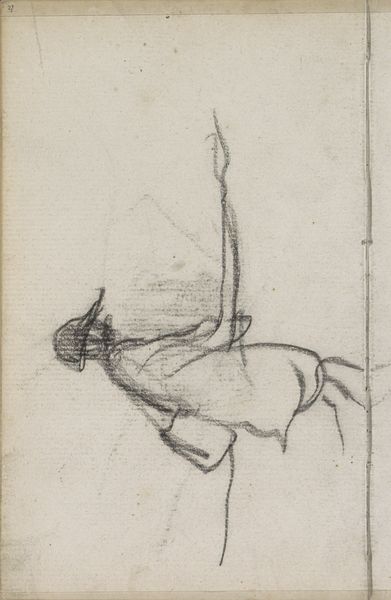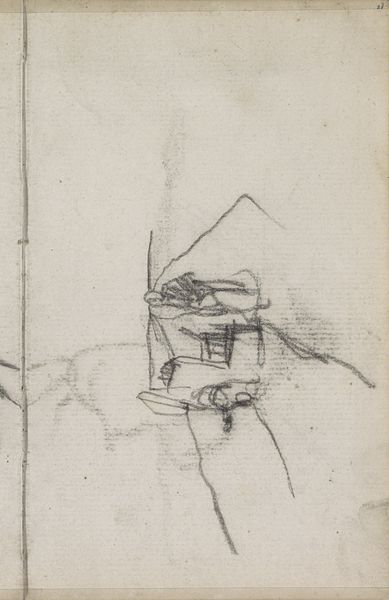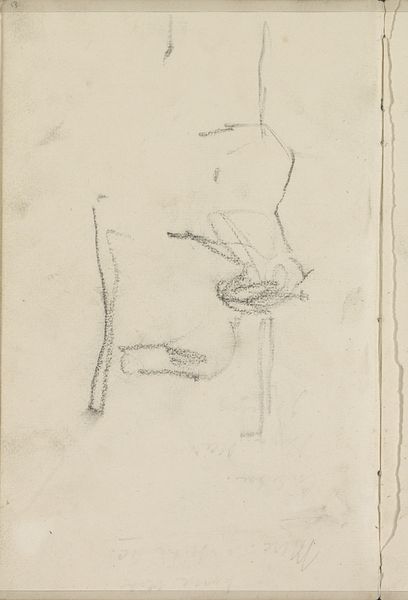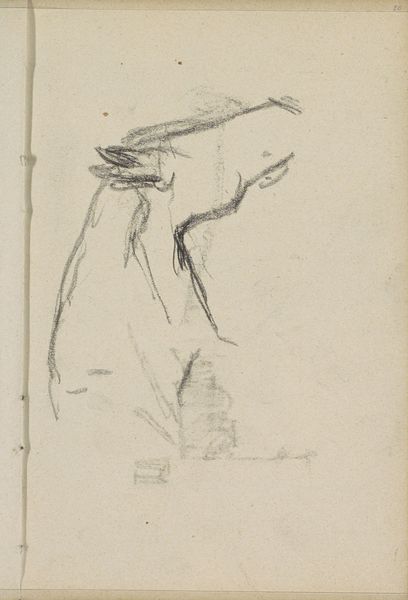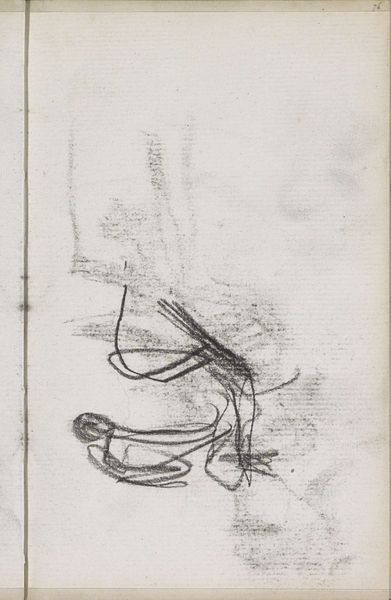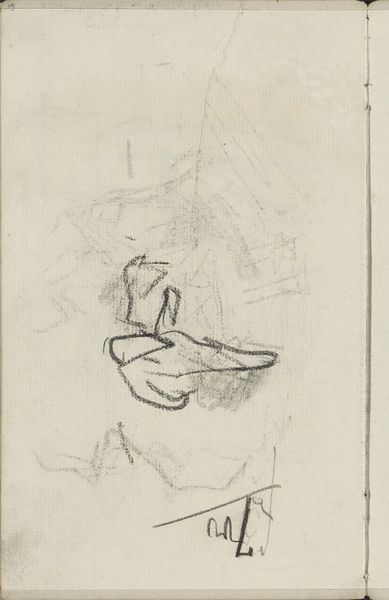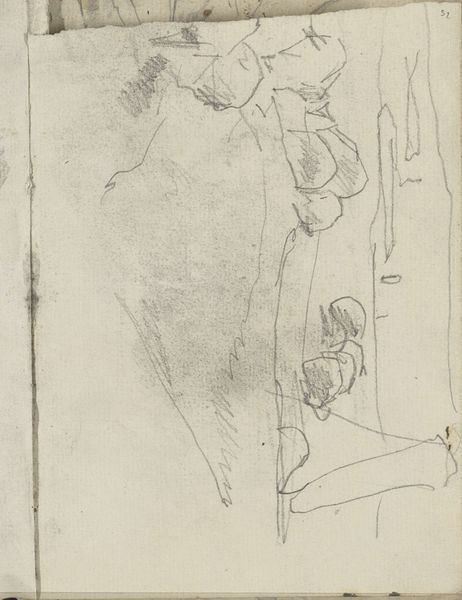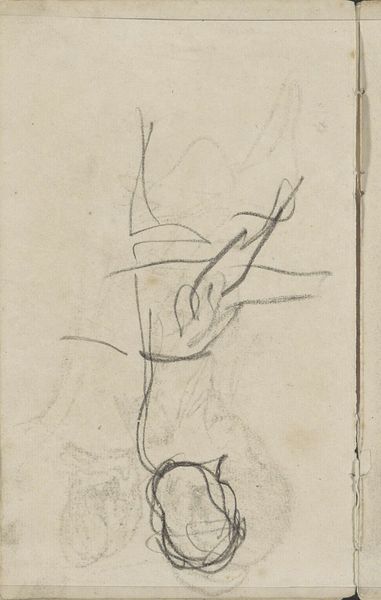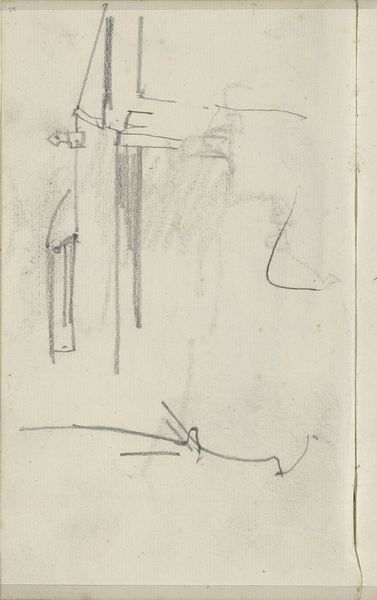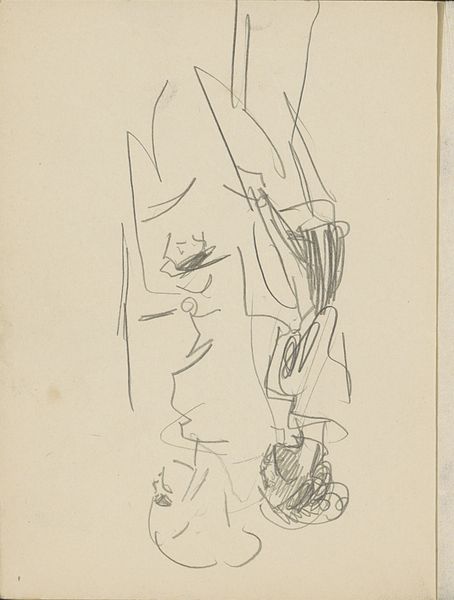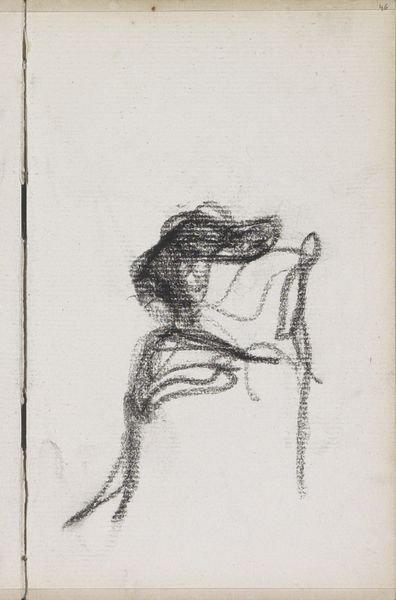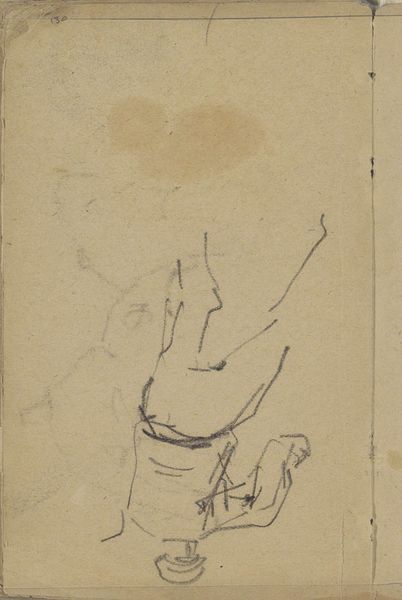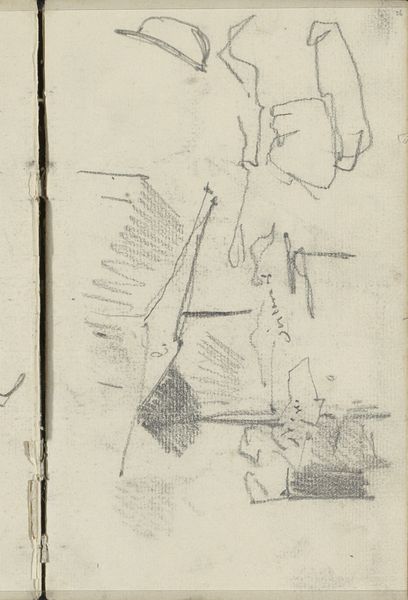
drawing, paper, pencil, graphite
#
drawing
#
pencil sketch
#
paper
#
sketch
#
pencil
#
abstraction
#
graphite
Copyright: Rijks Museum: Open Domain
Curator: I find something very modern in this quick sketch, don't you think? It seems incredibly avant-garde for its time. Editor: Well, let's unpack what we're looking at. This pencil drawing, titled "Ploeg," was created by George Hendrik Breitner between 1884 and 1886. It currently resides here at the Rijksmuseum. But yes, there’s a deliberate crudeness to it, wouldn’t you say? The rushed lines and open spaces on the paper almost mock any traditional interpretation. Curator: Absolutely. It’s more of an evocation than a depiction, wouldn’t you agree? I get the impression that it has something to do with Dutch rural life. But also, and maybe that's me thinking too much, the artist explores emerging tensions around urbanization. Editor: I'm not so sure. Let's focus on the visual qualities for a moment. The layering of graphite, the intentional blurring... There's a raw, almost brutal, directness in his choice of material and mark-making, wouldn't you say? Curator: Of course, but remember Breitner’s social circle. The man walked amongst those actively campaigning to document urban conditions. His "street photography", so to speak, captured moments that otherwise escaped formal representation at that time. Editor: Even granting all that, I'm drawn to how these sketched shapes repeat—it's almost rhythmic, this variation of curves. Does this contribute anything to that documentary goal that you suggest? To me, it looks purely compositional. Curator: That's where we fundamentally diverge. He wasn’t simply arranging shapes; Breitner was involved with radical intellectual circles, shaping—quite consciously I must add—how society understood its rapidly evolving present. This “abstraction”, or roughness, helped his contemporaries consider reality afresh. Editor: Hmm. It still reads, at least partially, as an artistic exploration of form above anything else. Regardless, It is clear Breitner masterfully played with the medium to generate dynamic rhythm and tension. Curator: Yes, even if we interpret the artwork using different lenses, there's no denying its compelling qualities. The drawing invites us to reconsider those fleeting impressions artists captured from 1880s society. Editor: I'll certainly second that, recognizing a deep sense of creative intentionality radiating from Breitner's graphite layering.
Comments
No comments
Be the first to comment and join the conversation on the ultimate creative platform.
